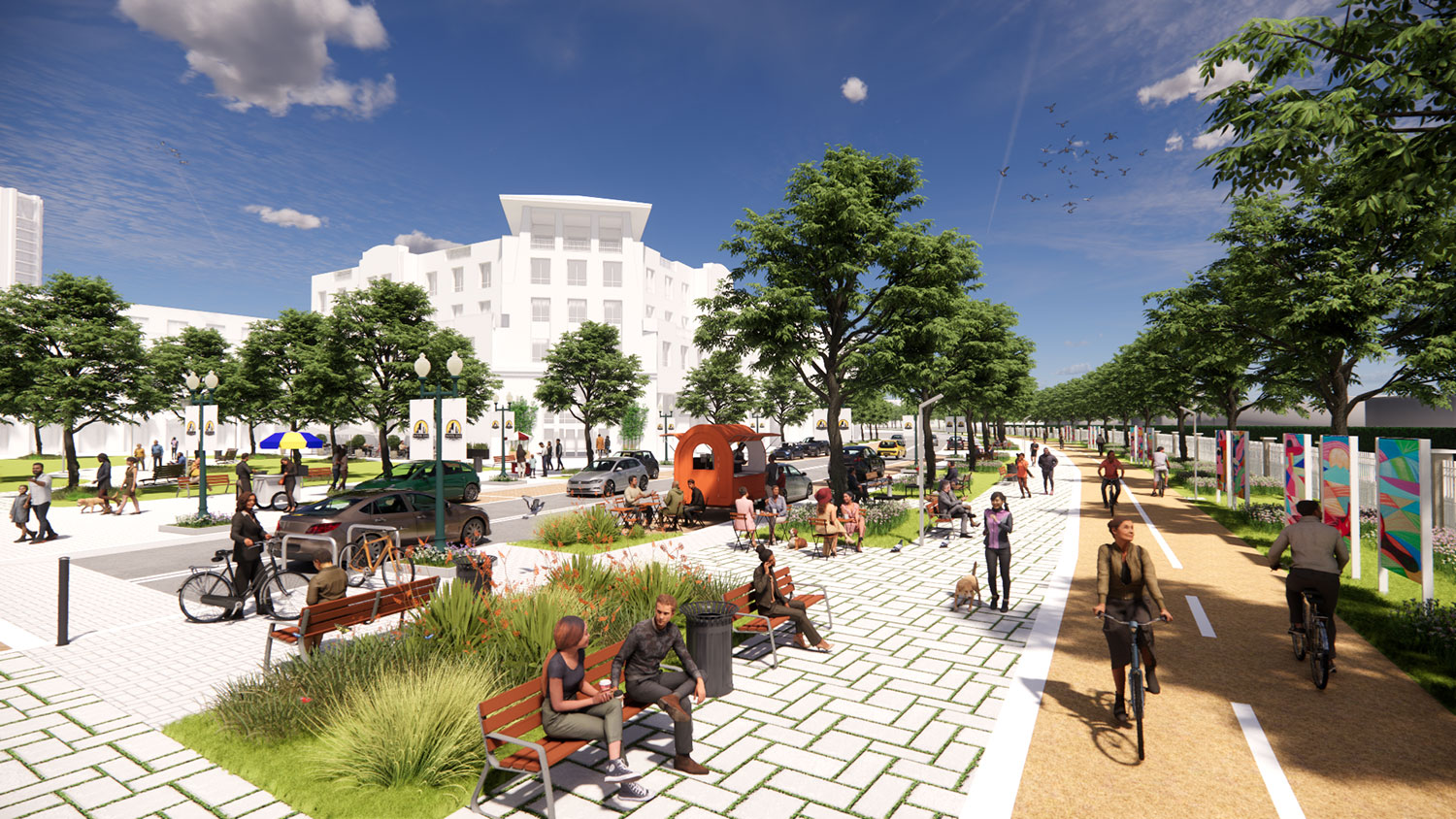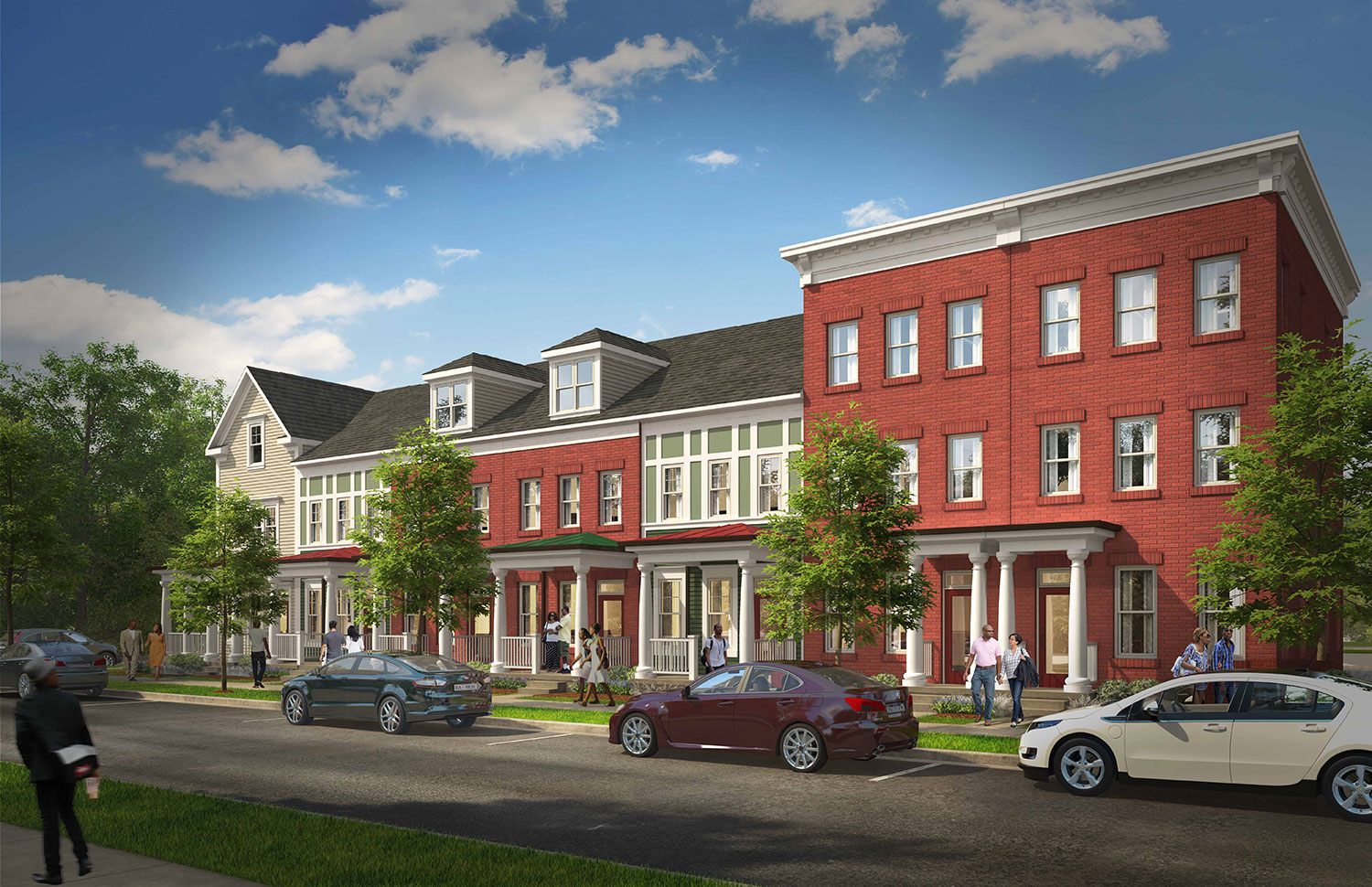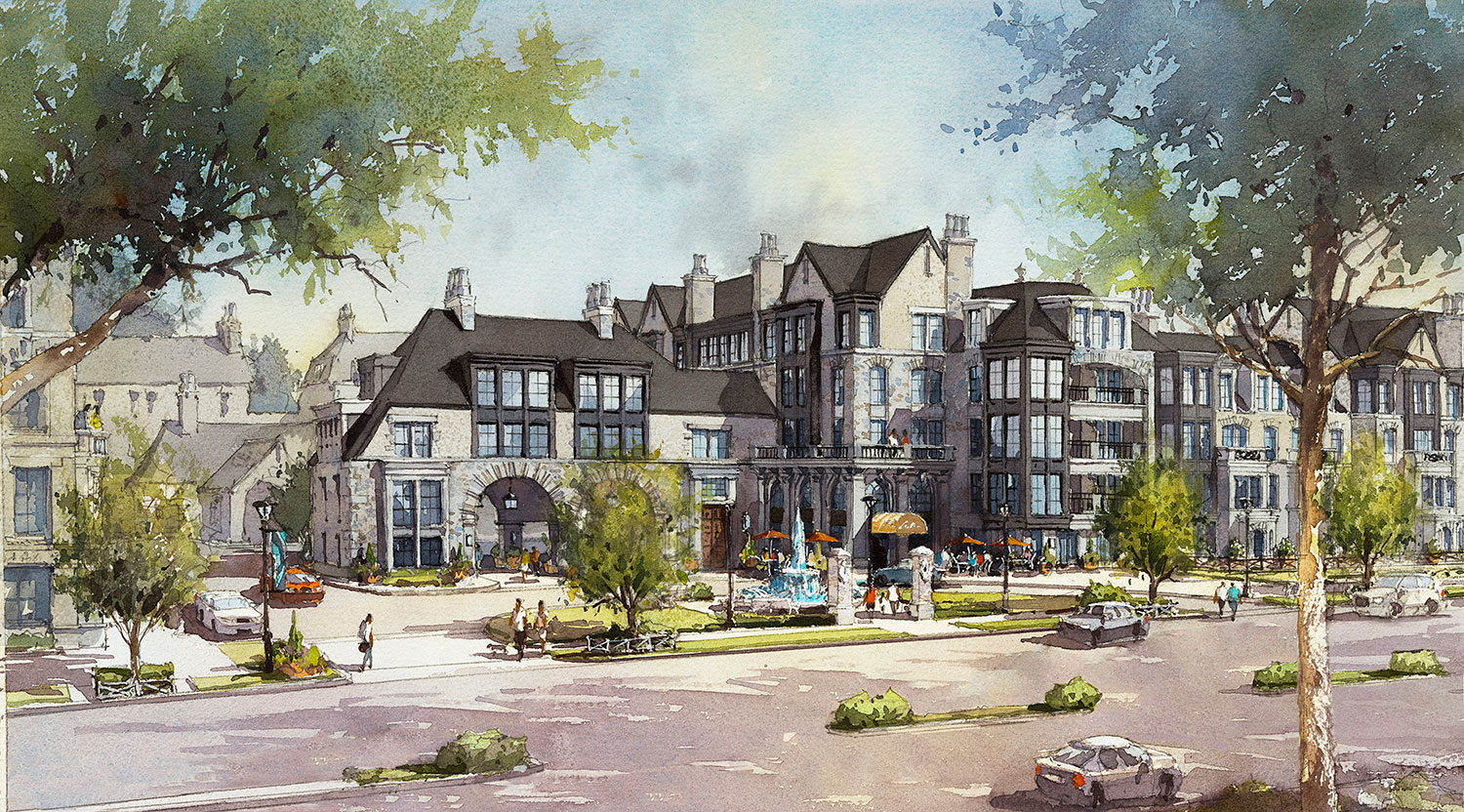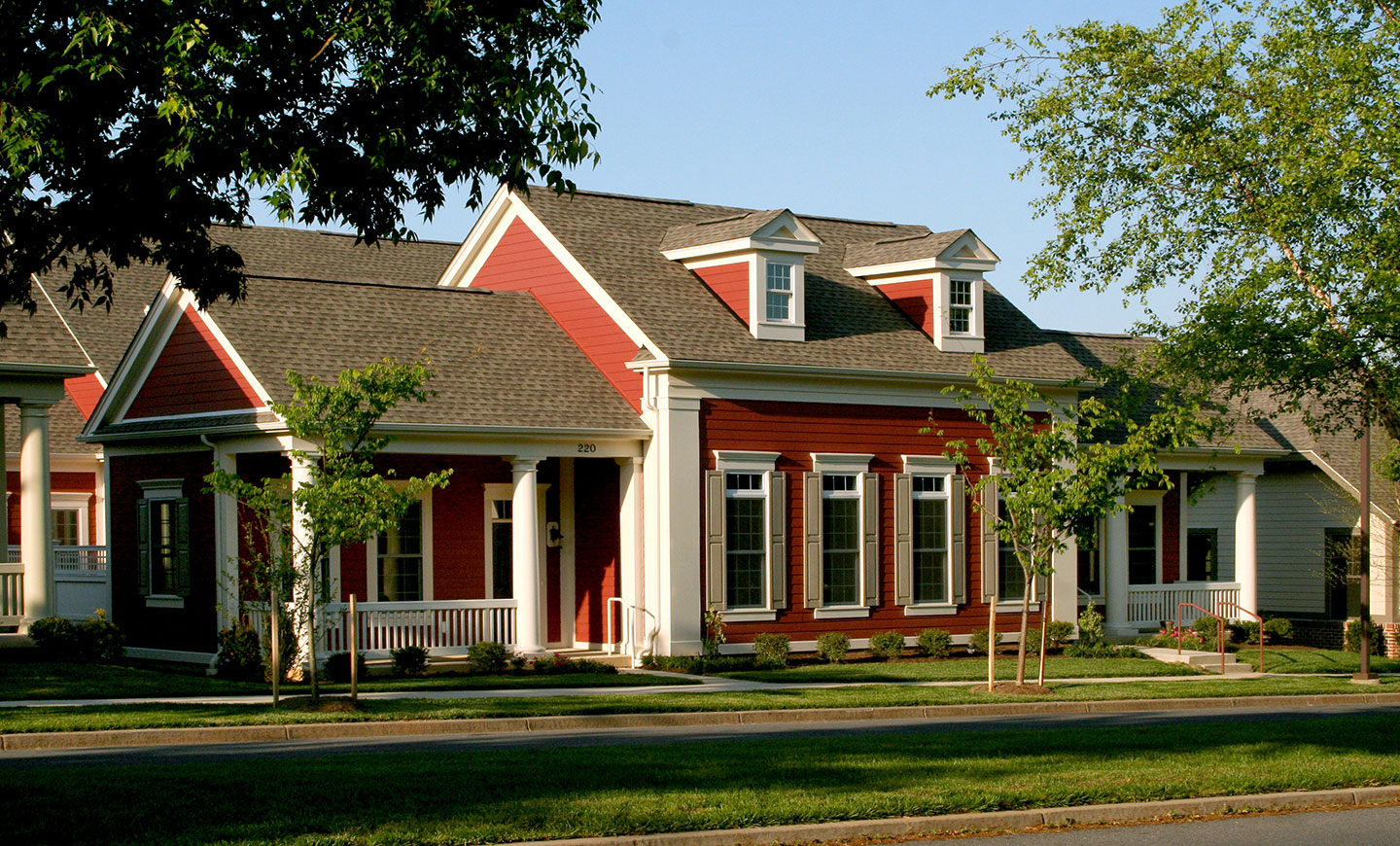The firm has designed over 500,000 residential units throughout its history.
Torti Gallas has planned and designed over 2,500 residential and mixed-use communities.
Torti Gallas has worked with over 100 municipalities across the United States to improve urban planning and design.
Our Campus and College Town work focusses primarily on student housing and faculty and graduate student housing neighborhoods. We seek to create market rate quality neighborhoods in what is often an affordable context. Comfort and character, amenity, affordability, relationships to the existing campus and larger context, and the ease of walking to and from the campus are the main issues for the projects.

Making a memorable and authentic place that can be an appropriate venue and focus for community life is the fundamental goal of creating a successful Town Center. Among the aspects of design that should be considered simultaneously to realize such a Place are:
· Making walkable streets and squares that enable and support civic life;
· providing appropriate character to support the place’s brand;
· creating a rich arrival sequence,
· placing the right anchor and in-line stores in the right locations,
· locating and sizing parking and services appropriately; and
· transitioning between the mixed-use center to the surrounding neighborhoods, which contributes significantly to the walkability of the entire area.

We believe that a home and, by extension, a neighborhood, is not a commodity but a force that shapes the lives of the residents and their visitors. The neighborhood where one lives is very probably the most important environment in the world for that person. It is as much an aspirational construct, as it is an increment of urbanism. Recognizing this potential, the goal of our efforts includes having a healthy, beautiful, comfortable, and convenient place for enriching family life and neighborly interaction, both formal and informal.

Communities should be conceived to support and nurture healthy lives and lifestyles. Comfortable walkability and the integration of active recreation opportunities are the two most significant components of healthy neighborhoods. Access to fresh, healthy food through the availability of markets in mixed-use neighborhoods, is also a contributor, as are Neighborhood medical clinics that can be gracefully incorporated within neighborhoods in storefront locations. The areas surrounding larger medical facilities are often deserts of surface parking and land targeted for expansion. The creation of Mixed Use Medical Districts in such areas can be made into, vibrant areas that support the healthcare mission of the institution, and attract the talent necessary for their success.

We are committed to repairing the mistakes of 50 years of automobile oriented development that has overseen the degradation of the public realm and sponsored the dual problems of urban divestment and suburban sprawl. Significant opportunities, both in central cities through infill development that creates value and takes advantage of existing infrastructure; as well as in the suburbs, by making walkable places that nurture civic life and that bring amenities that provide convenience and occasion for placemaking.

We believe the key issues relating to the design of Master Planned Communities are:
• Carefully understanding and mapping the land to conserve and showcase its most significant geography, and ecological features in order to root the community in place;
• defining neighborhoods one from another to create identity and opportunities for variety;
• providing and locating appropriate amenities;
• creating walkability and authenticity by mixing both the housing and commercial programs; and
• making a comfortable, convenient, and powerful public realm.




%20(1).avif)






.jpeg)

.avif)
.avif)



